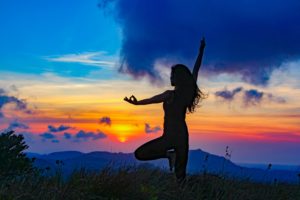
Ancient Origins in the Indus Valley: Unveiling the Vedic Beginnings
The history of yoga unfolds in the ancient Indus Valley civilization, where the earliest yogic elements can be traced back over 5,000 years. Rooted in the Vedas, the foundational texts of Hinduism, early practices focused on rituals, hymns, and philosophical teachings, setting the stage for the holistic path of yoga.
Patanjali’s Path: The Yoga Sutras and Systematic Guidance
Around 200 BCE, Sage Patanjali crystallised yogic wisdom in the form of the Yoga Sutras. This monumental work comprises 196 aphorisms, providing systematic guidance on ethical principles (yamas and niyamas), physical postures (asanas), breath control (pranayama), and the stages leading to ultimate spiritual realisation.
Classical Period Diversity: Schools and the Bhagavad Gita
The classical period witnessed the emergence of various yogic schools, each emphasising different aspects of the practice. The Bhagavad Gita, a sacred Hindu scripture dated to around 200 BCE to 200 CE, also incorporates yogic principles and teachings. It is a conversation between Prince Arjuna and Lord Krishna, imparting wisdom on duty, righteousness, and the path of self-realisation.
Mediaeval Innovation: The Rise of Hatha Yoga and the Nath Yogis
In mediaeval India, the Nath yogis significantly contributed to the development of Hatha Yoga, which focuses on physical postures and breath control to prepare the body for meditation. The Hatha Yoga Pradipika, a classic text from the 15th century, provides detailed instructions on various asanas and pranayama techniques.
Transmission to the West: Swami Vivekananda’s Pioneering Influence
The transmission of yoga to the West began in the late 19th and early 20th centuries, fueled by the interest of scholars and seekers. Swami Vivekananda, an Indian philosopher, played a pivotal role in introducing yoga to the Western audience at the Parliament of the World’s Religions in Chicago in 1893. His teachings emphasised the universality of spiritual truths and the potential for personal transformation through yoga.
Mid-20th Century Icons: Iyengar, Jois, and Desikachar’s Impact
In the mid-20th century, influential teachers like B.K.S. Iyengar, Pattabhi Jois, and T.K.V. Desikachar emerged. Iyengar, known for his precise alignment-based approach, founded the Iyengar Yoga style, while Jois popularised Ashtanga Yoga. Desikachar, the son of Krishnamacharya, developed the Viniyoga approach, tailoring the practice to individual needs.
Yoga Goes Global: The Western Boom and Countercultural Movement
The 1960s and 1970s witnessed a yoga boom in the West, fueled by countercultural movements and a growing interest in Eastern spirituality. The practice became synonymous with wellness, stress reduction, and holistic health. Yoga studios began to proliferate, offering a variety of styles catering to different preferences and needs.
Scientific Validation: Yoga’s Modern Resurgence and Health Benefits
In recent decades, scientific studies have validated the physical and mental health benefits of yoga, further contributing to its mainstream acceptance. Today, yoga has become a global phenomenon, practiced by millions of people worldwide. It continues to evolve, with modern variations like power yoga, hot yoga, and aerial yoga gaining popularity.
Evolution in Practice: From Ancient Traditions to Modern Variations
The history of yoga is a journey that spans millennia, encompassing diverse cultures and philosophies. From its ancient roots in the Indian subcontinent to its widespread adoption in the contemporary world, yoga remains a transformative practice that unites the body, mind, and spirit in the pursuit of holistic well-being.

Leave a Reply